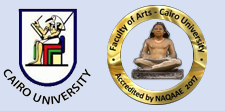عنوان المقال عربي
مصائر فردية ما بين التاريخ والأدب في قصة "الأنتيمون" للكاتب الصقلي ليوناردو شاشا
Document Type
Original Study
Subject Area
Language and Literature
Keywords English
Spanish Civil War، Leonardo Sciascia، György Lukács، historical novel، comparative literature
كلمات مفتاحية عربي
Guerra Civile di Spagna، Leonardo Sciascia، György Lukács، Romanzo Storico، Letteratura Comparata
Abstract English
The present article analyzes Leonardo Sciascia’s long story “Antimony,” published in Gli Zii di Sicilia in 1960. It suggests interpreting it through the reflections of György Lukács on the creation of characters in his The Historical Novel (1937) translated in Italian in 1965. Various critics interested in Sciascia’s work such as Claude d’Ambroise, Massimo Onofri, and Michela Montante have referred to the influence of the ideas of the Hungarian literary critic and philosopher on the Sicilian writer. Yet, such influence has not been the subject of a study per se. Focusing on “Antimony” through its presentation of individuals affected by the Spanish Civil War, and by navigating the history of its composition and Sciascia’s ambivalence regarding the genre to choose while composing it, the current study suggests a possible intersection between Lukács’ thought and Sciascia’s poetics in the presentation of what Lukács calls “individual destinies” which summarizes the problems of that time in Italy’s history. “Antimony” tells the story of individuals from “below,” those who experience history directly “partly making it, partly enduring it”. By comparing the two works, this paper seeks to engage in Comparative Literature by approaching literary as a source to understand history.
الملخص العربي
Il presente articolo analizza il racconto lungo “L’antimonio” di Leonardo Sciascia, de Gli Zii di Sicilia (1960), usando come chiave di lettura le riflessioni di György Lukács sui personaggi nel suo Il romanzo storico (1937) tradotto in italiano nel 1965. Vari critici interessati nell’opera sciasciana come Massimo Onofri, Michela Montante e – anche prima di loro – Claude d’Ambroise si sono riferiti all’influenza del pensiero del filosofo ungherese sullo scrittore siciliano. Tuttavia, quest’influenza non è stata oggetto di uno studio per sé. Concentrandosi su “L’antimonio” attraverso la sua presentazione di individui influenzati dalla Guerra civile di Spagna, e trattando la storia della sua composizione e le incertezze di Sciascia su quale genere usare, questo studio suggerisce una possibile intersezione tra il pensiero di Lukács e la poetica di Sciascia nella descrizione di quello che Lukács chiama “destini individuali” che riflettono i problemi dell’epoca. “L’antimonio” racconta la storia degli individui del “basso”: che vivono la storia direttamente “in parte operando, in parte subendo”. Confrontando “L’antimonio” di Sciascia al Romanzo storico di Lukács, questo studio rappresenterebbe dunque un contributo nell’ambito della letteratura comparata con interesse nella letteratura come fonte storica.
Recommended Citation
Wassef, Nadine Makram
(2024)
"Individual Destinies between History and Literature in Leonardo Sciascia’s “Antimony”,"
Journal of the Faculty of Arts (JFA): Vol. 84:
Iss.
2, Article 11.
DOI: https://doi.org/10.21608/jarts.2023.228600.1389
Digital Object Identifier (DOI)
10.21608/jarts.2023.228600.1389
Accept Date
2023-10-03
Publication Date
4-1-2024

